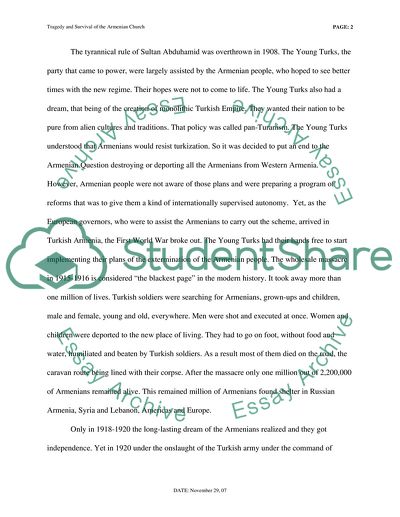Cite this document
(Tragedy and Survival of the Armenian Church Assignment, n.d.)
Tragedy and Survival of the Armenian Church Assignment. Retrieved from https://studentshare.org/history/1543383-tragedy-and-survival-of-the-armenian-church
Tragedy and Survival of the Armenian Church Assignment. Retrieved from https://studentshare.org/history/1543383-tragedy-and-survival-of-the-armenian-church
(Tragedy and Survival of the Armenian Church Assignment)
Tragedy and Survival of the Armenian Church Assignment. https://studentshare.org/history/1543383-tragedy-and-survival-of-the-armenian-church.
Tragedy and Survival of the Armenian Church Assignment. https://studentshare.org/history/1543383-tragedy-and-survival-of-the-armenian-church.
“Tragedy and Survival of the Armenian Church Assignment”, n.d. https://studentshare.org/history/1543383-tragedy-and-survival-of-the-armenian-church.


